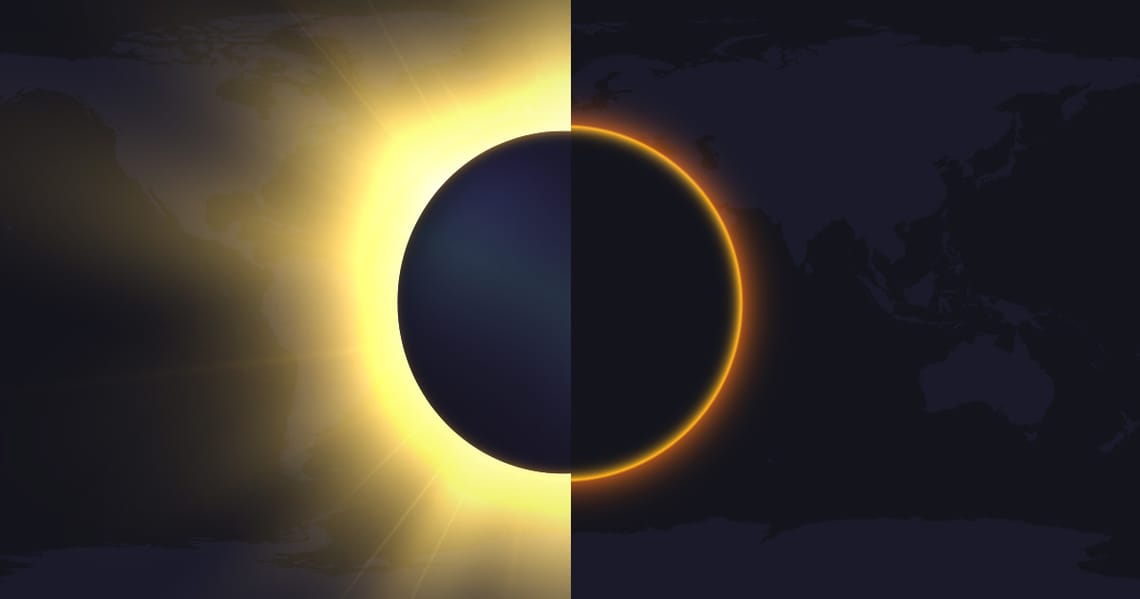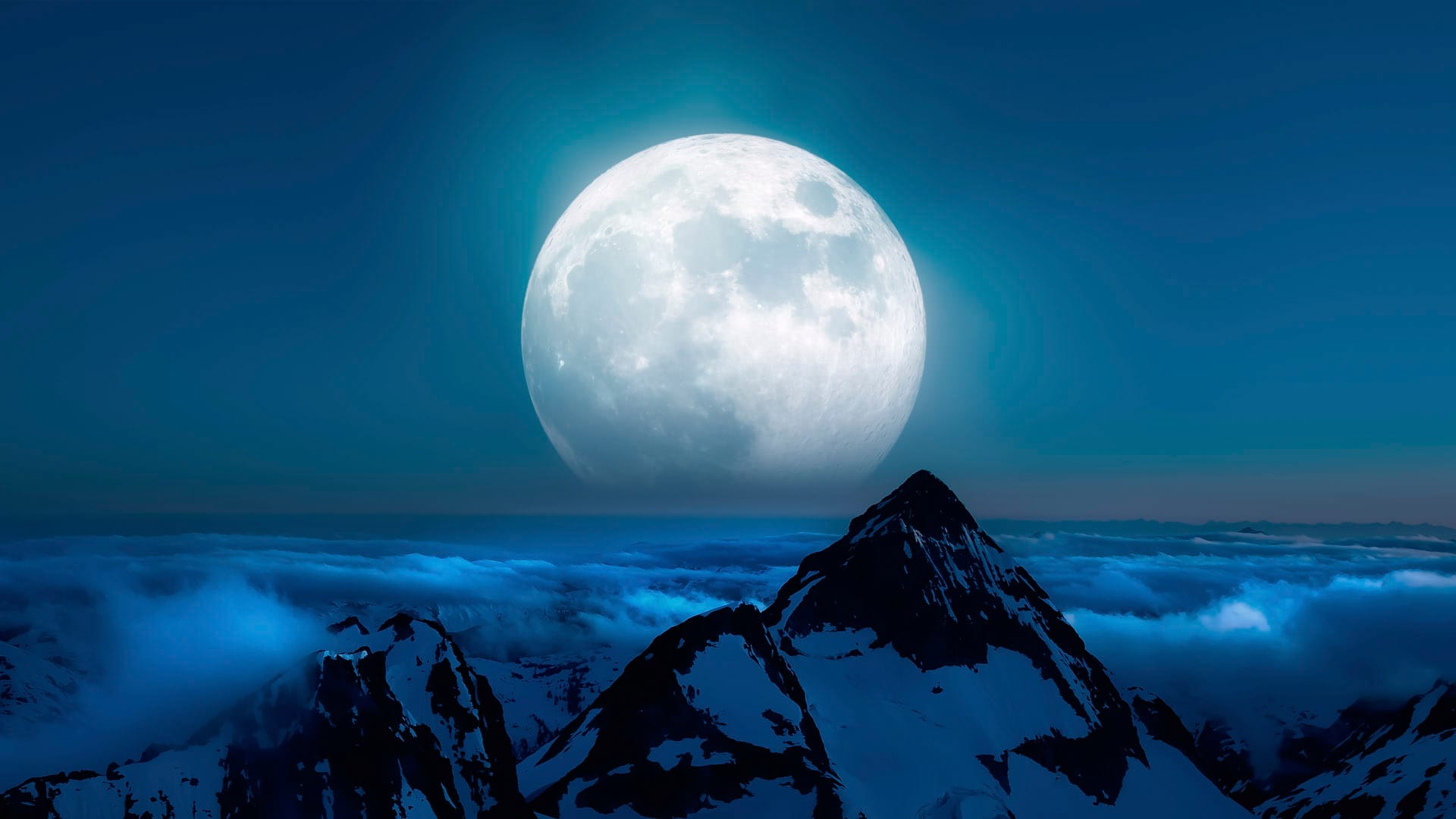February Full Moon: Snow Moon 2026
The second Full Moon of 2026, the Snow Moon, will occur on Sunday, February 1. The Moon will be in the constellation Cancer, near the famous Beehive star cluster. Want to know what bright dots are shining near the Moon right now? Use the Sky Tonight app. Now, let’s dive into all the details about February’s Full Moon.
Contents
- February 2026 Moon Dates & Time
- February Full Moon in Cancer
- What is a Snow Moon?
- When is the next Full Moon?
- Full Moon on February 1, 2026: Key takeaways
February 2026 Moon Dates & Time
Moon phases in February 2026
- Full Moon: February 1, 22:09 GMT
- Last Quarter: February 9, 12:43 GMT
- New Moon: February 17, 12:01 GMT (Lunar New Year)
- First Quarter: February 24, 12:28 GMT
You can learn the Moon’s phases for any month from the Moon Phases Calendar on our website. You can also find a similar calendar in the Sky Tonight app.
When is the Full Moon in February 2026?
This month, the Moon will reach its full phase on Sunday, February 1, 22:09 GMT. Remember that you don’t really need to know the exact time of this event to enjoy it, as the Moon will appear full on the nights around February 1. See exactly how the illumination of the lunar disc changes from day to day in the Sky Tonight app, using the Moon tab in the calendar.
What time does the Full Moon rise?
The time of moonrise varies for different locations. To learn the exact time for the place you’re currently in, use Sky Tonight. Open the app, tap the Magnifier icon, type “Moon” in the search field, and tap the corresponding search result. On the Figures tab, you’ll find info on the Moon’s current phase, visual magnitude, and illumination. On the Events tab, you can see the list of upcoming astronomical events related to the Moon, including the rise and set times.
February New Moon Brings an Annular Solar Eclipse & the Lunar New Year
The New Moon on February 17, 2026, at 12:01 GMT is no ordinary one — it coincides with two special events.
First, it brings an annular solar eclipse. At the eclipse’s maximum at 12:11 GMT, the Moon will block about 96% of the Sun, leaving behind a glowing “ring of fire.” Unfortunately, this spectacular sight will only be visible from Antarctica. If you’re not there, don’t worry — more eclipses are coming soon! You can always check the eclipse calendar to plan ahead.

Second, this New Moon also marks the start of the Lunar New Year. It’s the second New Moon after the winter solstice in the Northern Hemisphere. The Lunar New Year celebrations last until the next Full Moon, which is on March 3, 2026. Learn more about the Lunar New Year in our dedicated article.
February Full Moon in Cancer
In general, the Full Moon in February can be in one of three constellations: the zodiacal constellations Leo and Cancer, and the non-zodiacal small constellation Sextans, which is right next to Leo. In most years, the February Full Moon appears in Leo, but 2026 will be special – the lunar disc will shine in Cancer, close to the bright Beehive star cluster, visible to the naked eye on a dark, clear sky.
What is a Snow Moon?
Traditionally, the February Full Moon is called the Snow Moon in North America and Europe. Unlike some other Full Moon names (like the Worm Moon or the Pink Moon), this name speaks for itself and doesn’t require much explanation. February is the month of the heaviest snowfalls in North America, so Native American tribes referred to it as the Snow Moon. Some tribes also called it the Hunger Moon because it was difficult to hunt under harsh weather conditions.
February Full Moon alternative names
Different cultures gave the February Full Moon different names. Here are some of them:
- Chinese: Budding Moon
- Celtic: Ice Moon
- Cree: Eagle Moon
- Cherokee: Bony Moon
- Southern Hemisphere: Grain Moon, Barley Moon, Red Moon, Dog Moon
Snow Moon: Spiritual Meaning
The Snow Moon lights up the sky in the middle of winter in the Northern Hemisphere, when the nights are long and the world feels quiet. Some people say this Moon is a time to slow down, rest, and look within. Its glow on snowy fields can remind us that even in silence, life is preparing for change. The Snow Moon is often linked with reflection, patience, and gentle beginnings.
Remember that these ideas aren’t science, but traditions and a bit of imagination. Think of the Snow Moon as a simple reminder to pause, breathe, and enjoy the calm beauty of winter.
When is the next Full Moon?
The next Full Moon after the Full Snow Moon of 2026 will occur on March 3, 2026, at 11:38 GMT. It is traditionally referred to as the Worm Moon. If you’d like to learn more about the March Full Moon and the origin of its name, read our article. Find out what bright stars will be visible near the March Full Moon using the Sky Tonight app.
When is the next Snow Moon?
The Snow Moon is a traditional name for the February Full Moon, so the next Full Snow Moon after February 1, 2026, will occur on February 20, 2027, at 23:23 GMT.
Full Moon on February 1, 2026: Key takeaways
In February 2026, the Full Moon will occur on February 1 at 22:09 GMT. Traditionally known as the Snow Moon, it gets its name from the heavy snowfall typical of this time of year in the Northern Hemisphere. Want to check how the Moon looks from your location on any day? Use the Moon tab in the Sky Tonight app’s calendar to explore its phase, position, and more!
